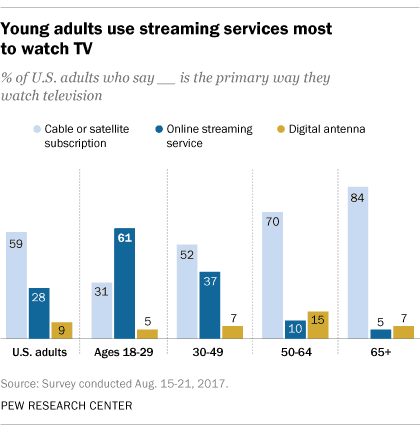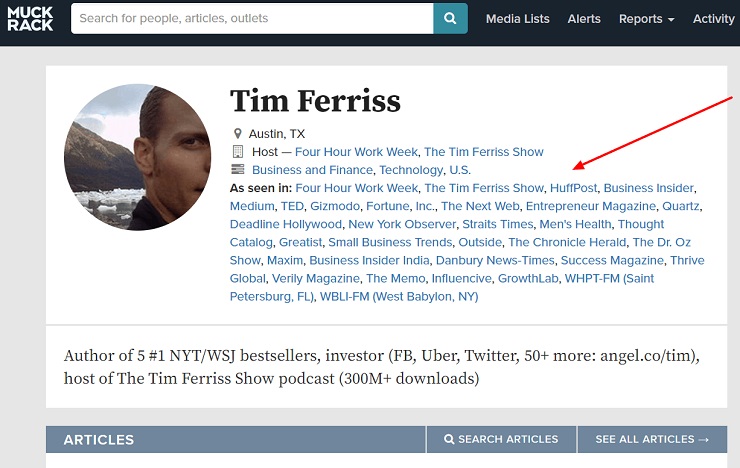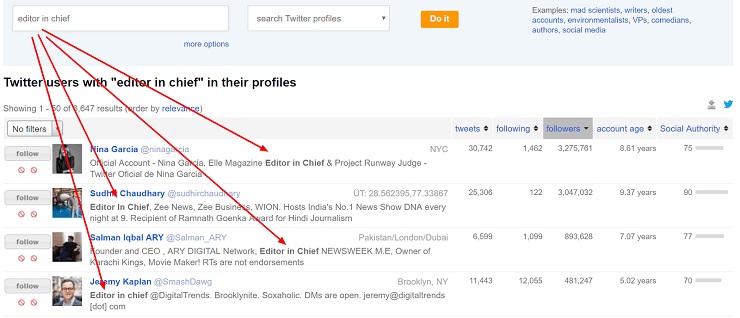During the 2018 teacher strikes in Oklahoma, a school district in Fort Worth, Texas did something genius. They put Now Hiring billboards with high starting salaries along high-traffic Oklahoma roads.
Frustrated Oklahoma teachers, earning $41,000 per year, picked up their phones to inquire about the $10,000 raise they could receive by teaching and living just a few hours south in Fort Worth.
The billboards even made headlines, driving thousands of dollars in free publicity for Fort Worth’s school district. Why did these billboards resonate and make such an impact?
It’s because the creative minds behind the billboards nailed both sides of every good marketing campaign: message and distribution. It was a brilliant offer strategically delivered to a very specific target audience.
When it comes to content marketing for startups, everyone knows their blog needs to have the right messaging. We’ve been told “quality over quantity” by all the experts for several years now.
Google likes quality. People like quality. We know it’s a win-win.
But there’s a new problem. Many startups spend so much energy creating optimized articles that they almost completely overlook creating a distribution strategy.
They create the message without thinking about how people will see it.
This is bad news for many startups. It’s also a huge opportunity for the teams willing to invest energy to excel at digital content distribution.
How to Think About Content Distribution
Every good blog distribution strategy starts with finding your consumer aggregate points (CAPs).
Definition: A consumer aggregate point is where a group of consumers with shared interests go to invest their time, focus, and attention. It’s where your target audience learns, relaxes, places their trust, and finds connection.
In most cases, an article doesn’t accidentally find its way to a consumer aggregate point. If you want your blog posts to have their greatest reach and spark interaction, they must be positioned where your audience is already spending its time.
Go to your audience. Don’t expect them to come to you.
The challenge is knowing where these CAPs exist. It’s not as simple as saying “Facebook, Forbes, or LinkedIn.” For great distribution, you have to niche down much, much further.
To take advantage of these niche digital channels, I suggest answering two questions about your audience:
- Where does my ideal customer invest their attention online?
- How do I insert my content into those places?
I’ll spend the rest of this article unpacking how to research and answer these questions.
Where Does My Ideal Customer Invest Their Attention Online?
Start with market orientation.
Market orientation is the alignment of a marketer to the ideas, pain points, psychographics, and demographics of their target customer.
Many people make the mistake of using marketing tactics and messaging that appeal more to the marketer than to their target market. As veteran marketing professor and consultant Mark Ritson says, “The first rule of marketing is you are not the customer.”
Remember: Entrepreneurs live in our own subculture. Many of us watch Netflix instead of cable, buy Apple products instead of Android, and read Foundr instead of Glamour or AARP. But that doesn’t mean your customers are on board with those same trends. Maybe they loathe Apple and have never used Netflix.
Apple commands about 45% of the US smartphone market. That remaining 55% represents a huge number of people—possibly even the majority of your audience. And streaming services like Netflix are far from universal. In fact, they aren’t even what the average adult uses to watch their favorite shows.
Don’t build your business on false assumptions that are based on your own experiences.
Gathering user data is indispensable to your content strategy. I could go down the rabbit hole of how to discover who your users are and what they want, but others have written more in-depth on that subject.
Suffice it to say, before consumers can fall in love with your blog, they need to know that you belong to their same tribe. This means showing up in the same places, participating in the same conversations, and geeking out about your shared interests.
Once you know who your customers are, it’s time to learn where they spend their time and attention online.
Finding Consumer Aggregate Points: Where Do Your People Hang Out?
The web is a fast-moving place. Being first to market can be a huge advantage. But no matter what, you probably won’t be first to audience.
In other words, there are people already talking to, interacting with, and spending time with your ideal consumer base every day. This is great news for you. All you have to do is find the subject matter experts, the influencers, and the online personalities in your space. Then you work backwards to find your audience.
Almost every online personality, from Nikkie de Jager to Tim Ferriss, uses owned media streams in the form of a personal blog, Instagram, or Twitter. These hubs are where influencers connect with their followers.
How do these personalities expand their followings? They appear in other media streams by writing for various publications or sitting down for an interview.
But these experts don’t just sit down with any audience. They go where they expect some deep interests to overlap.
In other words, if personalities in your niche appear in certain media, you should consider appearing there too. Here are some free tools to know where subject matter experts in your niche are being featured or talked about:
Muck Rack
Muck Rack is a website that many journalists use to showcase their portfolios. The site automatically tracks links where authors have been published (or talked about) and aggregates those links into the journalist’s profile.
Fortunately, because it is a portfolio website, anyone can access this information to see where people are being featured and talked about. Yes, it’s an internet stalking tool for anyone wanting to know where public figures, especially writers, get talked about online.
Let’s take Tim Ferriss for example.
Google “Tim Ferriss muck rack” and click on the first result.
Right away, the As Seen In section provides a list of publications where Tim Ferriss has been featured.
The features include everything from niche blogs to consumer publications to radio stations.
Next, if you want to see where he’s been featured recently, click the SEE ALL ARTICLES tab.
This provides a dropdown list of every article in which Muck Rack has seen Tim Ferriss.
Scroll this feed and write down every niche publication that sounds like a great fit for your target market.
I recommend looking toward the more niche publications and forums because they can turn out to be huge online subcultures for your target audience.
Followerwonk
This freemium Twitter research tool is helpful for finding topical publications and influencers within a specific subject.
The tool has several functions, but I only use the platform as a Twitter Bio search engine. Basically, you search certain keywords that you’d expect to appear in the bio of your target expert or organization. Then, you browse the results by one of several chosen metrics. By the size of their following, for example:
The Classics
Here are additional research hubs for learning more about your audience:
- Wikipedia (see where they’ve been featured)
- Reddit (find conversations about certain influencers or topics)
- Quora
- Social media search engines
- Backlink tools (if you have SEMrush or another SEO tool)
- Amazon’s “Customers who bought this item also bought” section
- Book reviews on Amazon and Goodreads
Recap: Once you know who is speaking to your audience, you can backtrack from their profiles to find relevant consumer aggregate points. Next, you must find ways to join those conversations.
Let’s talk distribution!
How Do I Get My Content Into Those Places?
In June 2018, Mobile Jazz, a boutique web and mobile app development company, published an article written by my partner Sarabeth Lewis on their company blog.
Mobile Jazz started distributing the article across all their regular outlets at the time, including Hacker News. Within a few hours, the traffic on Mobile Jazz’s website spiked. Instead of its regular 300-400 website hits (not adjusted for bots) per day, they experienced almost 8,000.
The article had been voted to the front page of Hacker News and even started some controversy in the comments section.
This spike doesn’t occur every time Mobile Jazz shares something to Hacker News. If it did, the formula for going viral would be clear as day: everyone should always share content there.
The key is that Mobile Jazz was active on a popular consumer aggregate point for its target audience. They positioned themselves for success by investing time to research where content like theirs would get the most attention.
Work With the Media
One key instrument for article distribution is getting your content shared by larger publications.
After using tools like Muck Rack to track down relevant publications, you will know which digital publishers are most likely to care about what you have to say.
Every online publisher—from NYTimes to a no-name blog—needs fresh content for its readership. New data is a contagion in digital media. Hard numbers inform actions and build compelling stories.
If you can feed media organizations the data they’re hungry for, you’ll often be rewarded with shares, mentions, features, and backlinks.
Create Graphics
The Blog Millionaire recommends creating data-driven graphics.
First, write a blog post. Use the main statistics and points throughout the article to create corresponding graphics. After your post is live, send cold emails to relevant bloggers and journalists to offer the graphic in exchange for a backlink to your original article.
Infographics, once published, are easily shareable. Plus, you can brand them using your logo to make sure viewers know where to turn for similar data.
Be a Good (Digital) Neighbor
You’re not the only person paying attention to social shares and article comments. Every blogger, journalist, and publication is paying attention to what transpires after they click Publish.
Build a reputation for being helpful. Leave comments on the articles of other people in your tribe. Follow and start conversations with people in your industry. With time, you may find that people begin reciprocating those interactions on your posts.
Create Interactive Content
Have an opinion. Start some controversy. Ask a question. Respond to every comment.
An interactive blog post, complete with an angle that readers can disagree with, is a formula for virality.
Posts that everyone agrees with are obvious. No one shares them because no one cares about the content. A post that people can disagree with, on the other hand, can garner a lot of attention.
But be selective about your angle. Controversy for controversy’s sake can backfire and make you lose credibility. The stronger your argument, the stronger your chances of getting traction with a controversial article.
Make Your Blog the Source
We live in the link economy. Make yourself a go-to source for topical industry stories by setting up an account on HARO (help a reporter out), following hashtags like #PRRequest and #JournoRequest, and by following industry-relevant journalists and bloggers on Twitter.
When a relevant story comes your way, offer your (well-written) opinion to the journalist. Usually the journalist will link back to your website in their article. If the journalist is discussing a topic you’ve written about for your blog, consider choosing that blog link instead of one that just leads to your home page.
Anyone who follows the link will be happily surprised when they’re directed to more information about the topic they were just reading about.
Make Others Your Sources
Reverse everything I said in the previous point. Instead of looking for opportunities to be a source to a blogger, try to acquire bloggers as sources for your content. You can do this through the methods used above. You can also reach out to people directly.
If you know an expert in a subject you’re writing about, email them. Ask for a quote. When someone agrees to be quoted, link back to their website. Tag them on all relevant social media pages when you publish.
Usually, they’ll share the article with their own audience because they were featured.
Also, don’t be afraid to ask celebrities and influencers who seem unreachable. While it was still a very small and young publication, Foundr Magazine booked an email interview with Richard Branson, which snowballed the organization into what it is today.
Rethink Your Social Strategy
Social media gets a lot of hype. Almost every digital marketer will advise you to get an account for your business on the top social sites. But then what?
Facebook engagement numbers for organic business posts are approaching nil. By some studies, organic reach for business profiles is less than 2%. That’s right, 2 (or fewer) out of every 100 followers may see your post.
Of course, this doesn’t make social media channels obsolete. It just means you have to put in the extra work to reach your target market. Here are some best practices:
Join Groups
The key is to remember that most social media outlets are not niche enough to be helpful on their own. Your consumer aggregate point isn’t Facebook, Twitter, or LinkedIn. It’s a small subsection (whether a group or hashtag) within those networking sites.
At our copywriting firm, my wife and I have found many leads through niche groups on social media. We use a handful of consumer aggregate points to market or pitch our offerings to businesses.
For instance, on Facebook we are part of Austin Freelance Gigs. It is niche in two ways: location and topic. Our competitive advantage here is much stronger than if we simply browsed and interacted on Facebook writ large.
Share Multiple Times
One and done is not the right attitude for social media marketing. Just because an article is old news to you, doesn’t mean your followers have seen it yet. “The fourth time you reuse an idea will, for a lot of people, be the first time they notice it,” writes Intercom’s Senior Editor, Geoffrey Keating.
Use your content multiple times. Here’s some easy copywriting formulas for writing social posts to drive engagement and maybe start a conversation. This keeps your feed moving and your social media pages fresh. Also, if someone you follow asks a question you’ve already answered in an old blog post, reference and link that post in your response.
Help the Algorithm
All the top social media algorithms compound traction based on engagement. That means you can help posts spread further by commissioning a team of regular sharers.
On LinkedIn, for example, we’ve created a group message with other small business owners. Every time someone writes a new blog post, they share it on LinkedIn and then within our group message. Everyone within the private message interacts with the new post adding likes, comments, or even shares.
The same can be done on Twitter, Facebook, Reddit, Slack, or Instagram.
Syndicate
This is another form of post repetition. Some sites like LinkedIn and Medium promote articles published on their own platforms more than they spread outside links.
However, it’s still best to publish on your own URL first to own the canonical link for your content. Otherwise, you’re boosting the SEO for LinkedIn and Medium instead of your own website.
The best of both worlds is syndication. This works by first publishing an article on your own blog, and then—some people recommend posting two weeks or more later—publishing the same content on LinkedIn or Medium. If you do this, make sure to link the original publisher and URL at the bottom of the article. Like so:
Boost a Post (the Right Way)
Since this requires digital ad spend, you’ll want to get the most out of every boosted post. I have two recommendations for maximizing the impact of a boosted article:
- Boost topics that your audience has shown organic interest in. Let’s say you publish a blog which sparks an unusual number of shares, comments, and likes. Either you can boost that post to give it more traction or you can write a follow-up post. The follow-up post should be slightly further down your sales funnel. In other words, it should mention the benefits or solutions of your company more than the previous post. Once you’ve written the article along the same topic, boost the article by retargeting visitors to your website. This will include many people who read your last article. Since it’s already within their interest, many will likely click.
- Boost posts that generate subscribers. If an article incentivizes email subscriptions, then it may be worth a boost just to grow your list of followers.
Create Campaigns in Tandem with Your Allies
Last year my wife and I helped a subscription-based app create a campaign around a use case. The app was designed to integrate with services offered by its larger parent company. The problem was, not enough users were finding our client in their App Center.
The plan was very simple. Our client had received permission to send an email message to the other organization’s email list. Both companies share customers, but our client offers different features (read: they aren’t competitors).
We helped create a catchy newsletter that linked back to a compelling use case we’d written about our client. We included a call to action for readers to sign up and add the app.
When the newsletter went out, the simple campaign doubled our client’s monthly paid subscribers.
As your team creates content, think about how those topics might be helpful to your network. Trade shares with fellow startups to help your company and theirs achieve greater reach.
Promote Your Entire Blog
Most of the tactical tips in this article concern individual article distribution. But you can also spread your blog more generally.
In this case, use the link to your blog, not an individual article. (Often appears as url.com/blog.) Paste this url to other common things you distribute on a regular basis. As a few examples:
- Email: Add a section to your email signature that links to your blog
- Business card: “Read my writings at url.com/blog”
- Social media profile: Add a link within your personal description
- Marketing materials: Fliers, brochures, branded bookmarks, etc.
- FAQ or Contact pages: “We may have answered some of your questions in a recent article…”
Growing Your Tribe: Become Your Own Consumer Aggregate Point
The real power is audience retention. Once you begin to research and apply consumer aggregate strategies, you should strive to make your own website a place for relevant consumers to visit and stay.
You want to become the new consumer aggregate point for topics in your industry. This is built through consistency and publicity: regular distribution efforts.
In conclusion, it’s not enough to simply write and publish an article. Forming a relevant distribution strategy will help you build an audience, acquire more customers, and ultimately foster a community centered around your business, blog, and offerings.
There are many tools for finding and spreading your blog content online. It’s not easy work. Results won’t occur overnight. But, as you invest your time in distribution, you’ll steadily gain more and more traction around your insights.
Before you know it, you’ll be the one with the following everyone else envies. That’s when it all switches. Suddenly, you’re the expert people like me are stalking on Muck Rack.
How did you find your audience? Share your stories and ideas in the comments.
























